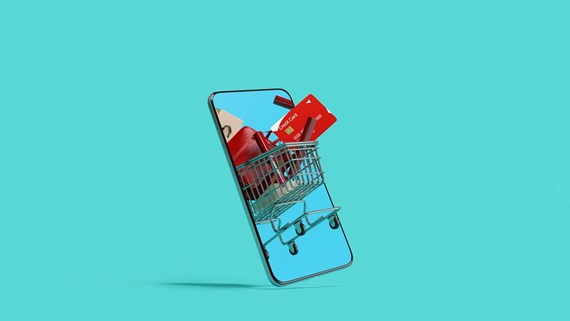Retailers embracing the digital economy
Insight

The digital transformation of the retail sector is not a new trend. The strain on brick and mortar stores has been rising over the past decade as more and more consumers have embraced the world of e-commerce and turned their back on the once beloved high street. Yet, while physical retail was already hanging in the balance, the scale of the challenge it faces has increased in recent months, and will continue to do so going forward, as COVID-19 has forced retailers to literally shut their doors and driven the public to turn even further towards online shopping. In fact, e-commerce sales in the UK rose 33.9 per cent in June which equated to a new 12-year high [1] and 58 per cent of consumers expect to engage in more online shopping after COVID-19 than previously [2].
While some continue to see digitalisation as a threat to traditional retail models, others are starting to recognise the importance of the interplay between digital and physical platforms – what the market refers to as “omnichannel” retailing – and the opportunities that this can afford. Research indicates that the integration of online and offline strategies can actually increase revenues – according to one study, omnichannel customers spend 4 per cent more in-store and 10 per cent more online than those who only use a single channel, and customers who use more channels spend more money in-store overall. [3]
So, how can retailers use technology to drive physical sales? A shift in mindset and a repurposing of space is fundamental to breaking down the barrier between online and offline sales. An increasing number of retailers are moving away from the concept of simply using their stores to sell products, towards using innovative digital tools to develop their brand and create an immersive experience for customers who, in today’s world, are more discerning and expect both an exciting and personalised experience. Digital technologies such as augmented reality and 5G artificial intelligence enable this - from sign-in screens which show customers their purchase history and wish lists and “magic mirrors” which allow shoppers to virtually try on clothes, to headsets that allow virtual test-drives, geolocation-based push notifications which send out targeted offers, and personalised in-store advertisements.
The modern shopper also requires efficiency with one study revealing that 83 per cent of consumers expect retailers to provide flexible delivery options and to allow products to be purchased online but collected in-store. [4] The shift towards cashier-less shopping is therefore only set to accelerate as is the need to use stores as collection points. In fact, the DIY group, Kingfisher, has recently announced that its brick and mortar shops are fundamental to its digital strategy as its warehouses are unable to support the exponential growth of its online deliveries.
By taking a more holistic approach, and embracing both online and offline sources, retailers can also collate insightful data along all the different touchpoints of the consumer journey which can then be utilised to generate additional revenue in the future. The integration of technology in-store has in fact been shown to not only drive physical footfall but also online sales, with evidence suggesting that offline factors have a bearing on 72 per cent of all digital purchases. [5]
It is therefore clear that if retailers can strike the right balance, there is scope for technology to complement, rather than simply compete with traditional retail, and for physical stores to not only find their feet, but eventually play a key role in shaping the digital economy.
Footnotes:
[1] https://www.retailgazette.co.uk/blog/2020/07/online-retail-sales-continues-to-boom-despite-lockdown-exit/
[2] https://www.digitalcommerce360.com/article/coronavirus-impact-online-retail/
[3] https://www.cbre.us/real-estate-services/real-estate-industries/omnichannel/the-definitive-guide-to-omnichannel-real-estate
[4] https://www.digitalcommerce360.com/article/coronavirus-impact-online-retail/
If you require further information about anything covered in this briefing, please contact your usual contact at the firm on +44 (0)20 3375 7000.
This publication is a general summary of the law. It should not replace legal advice tailored to your specific circumstances.
© Farrer & Co LLP, November 2020






